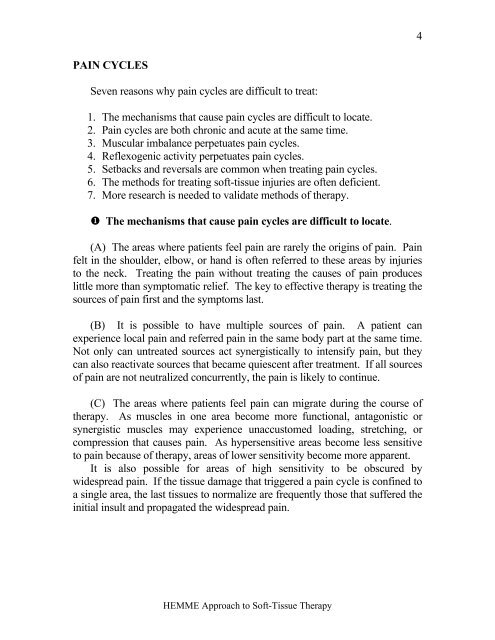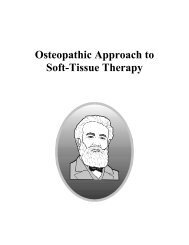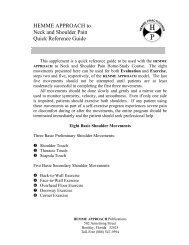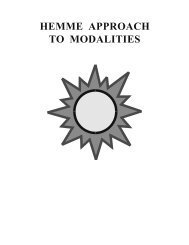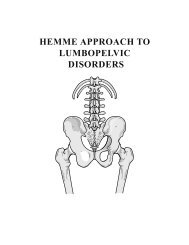HEMME APPROACH TO SOFT-TISSUE THERAPY
HEMME APPROACH TO SOFT-TISSUE THERAPY
HEMME APPROACH TO SOFT-TISSUE THERAPY
You also want an ePaper? Increase the reach of your titles
YUMPU automatically turns print PDFs into web optimized ePapers that Google loves.
4<br />
PAIN CYCLES<br />
Seven reasons why pain cycles are difficult to treat:<br />
1. The mechanisms that cause pain cycles are difficult to locate.<br />
2. Pain cycles are both chronic and acute at the same time.<br />
3. Muscular imbalance perpetuates pain cycles.<br />
4. Reflexogenic activity perpetuates pain cycles.<br />
5. Setbacks and reversals are common when treating pain cycles.<br />
6. The methods for treating soft-tissue injuries are often deficient.<br />
7. More research is needed to validate methods of therapy.<br />
The mechanisms that cause pain cycles are difficult to locate.<br />
(A) The areas where patients feel pain are rarely the origins of pain. Pain<br />
felt in the shoulder, elbow, or hand is often referred to these areas by injuries<br />
to the neck. Treating the pain without treating the causes of pain produces<br />
little more than symptomatic relief. The key to effective therapy is treating the<br />
sources of pain first and the symptoms last.<br />
(B) It is possible to have multiple sources of pain. A patient can<br />
experience local pain and referred pain in the same body part at the same time.<br />
Not only can untreated sources act synergistically to intensify pain, but they<br />
can also reactivate sources that became quiescent after treatment. If all sources<br />
of pain are not neutralized concurrently, the pain is likely to continue.<br />
(C) The areas where patients feel pain can migrate during the course of<br />
therapy. As muscles in one area become more functional, antagonistic or<br />
synergistic muscles may experience unaccustomed loading, stretching, or<br />
compression that causes pain. As hypersensitive areas become less sensitive<br />
to pain because of therapy, areas of lower sensitivity become more apparent.<br />
It is also possible for areas of high sensitivity to be obscured by<br />
widespread pain. If the tissue damage that triggered a pain cycle is confined to<br />
a single area, the last tissues to normalize are frequently those that suffered the<br />
initial insult and propagated the widespread pain.<br />
<strong>HEMME</strong> Approach to Soft-Tissue Therapy


